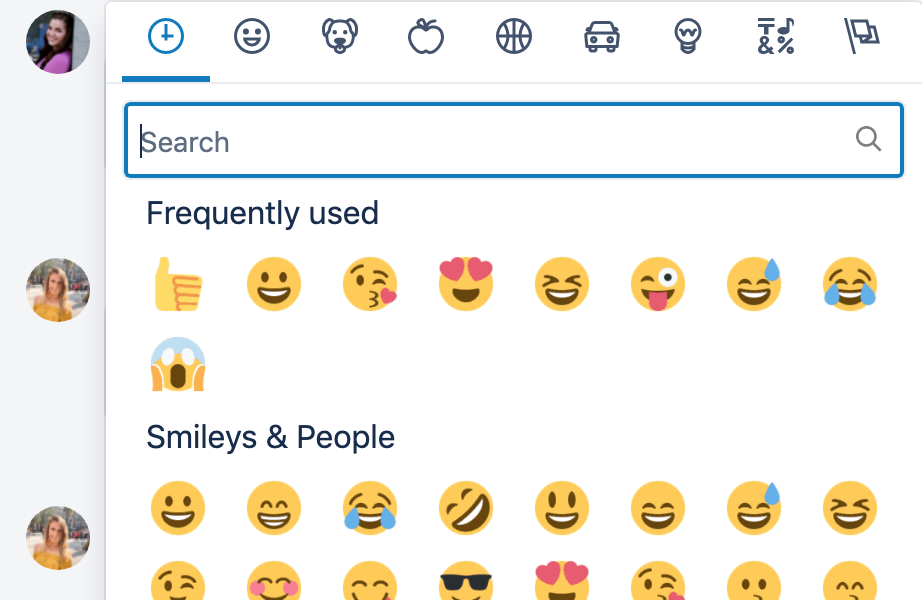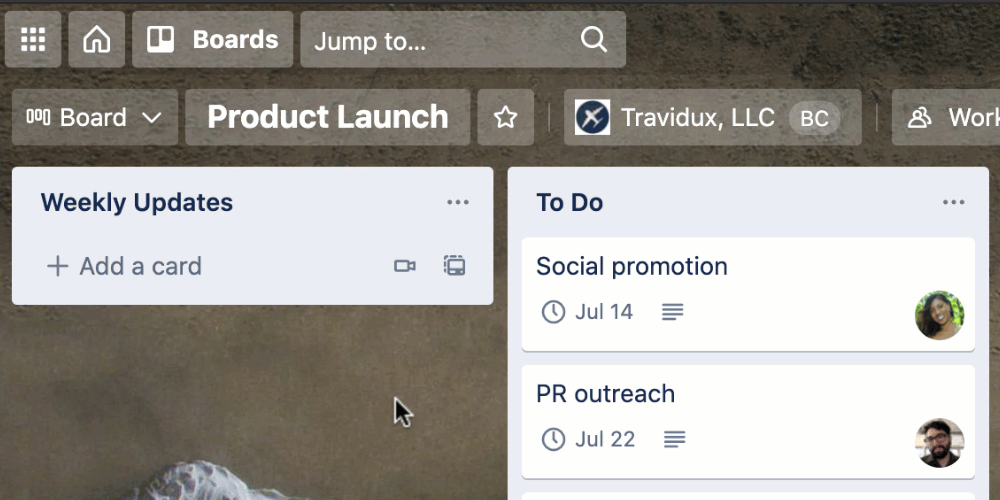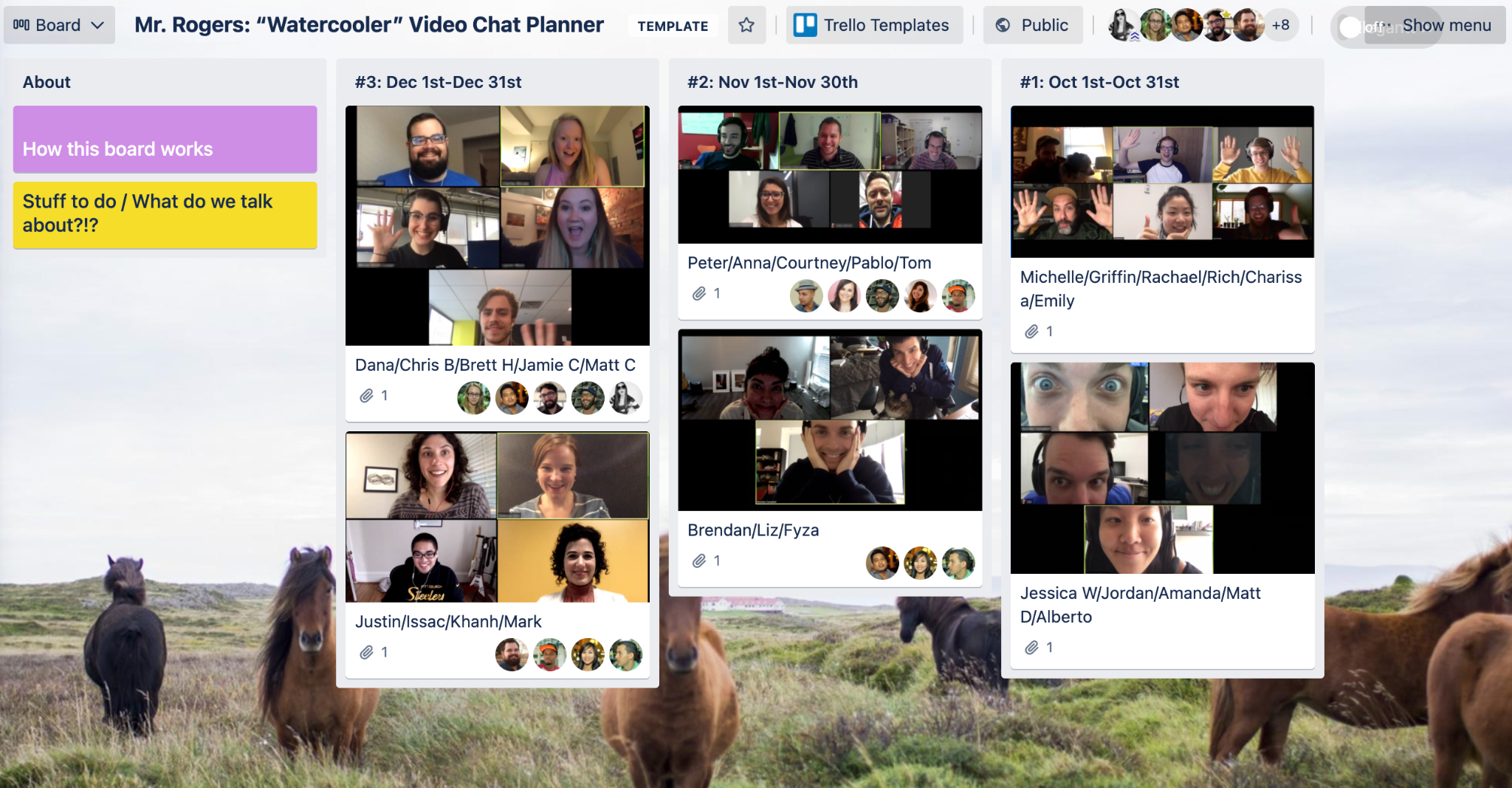Take a minute to think about one of your colleagues. What do you picture? Do you see a warm and smiling face? Or perhaps them seated at their desk that’s constantly overflowing with plants and coffee mugs?
If you’re like most people today, your mind might be filled with an entirely different vision of who your coworker is. Maybe it’s the avatar they use online. Or their go-to email sign-off. Or maybe it’s them from the shoulders up with a carefully-selected Zoom background behind them.
Working Online: Awesome Or Anonymous?
There’s no denying that our digital means of working—whether you’re part of a distributed team or use a lot of online tools to streamline in-person collaborations—offers plenty of benefits. It helps teams:
- Increase visibility and transparency into the work that’s being done
- Keep information organized and accessible
- Improve workflows and boost efficiency
But, with the undeniable perks aside, let’s just call it like we see it: Getting so much work done online can feel a little, well, impersonal. There’s plenty of research that points to the fact that we feel a sense of anonymity online that we wouldn’t get elsewhere.
That’s good news for the trolls and the keyboard warriors, but what does it mean for you and your team? Unfortunately, a loss of connection and bonding.
In fact, 51% of people who needed to work remotely during the pandemic admitted that they felt less connected to the company culture. The New York Times reported that a lot of people were quitting their jobs without ever actually having met their coworkers—which reduced their emotional attachment and made it way easier for them to move on without that bittersweet feeling that typically accompanies a goodbye.
The good news is that this isn’t a zero-sum game. When they’re used effectively, the digital tools that your team relies on can actually help you forge and maintain real, human connections. Here’s how to make that happen.
1. Share How You’re Feeling With Emojis and GIFs
Text-based communication (like emails, instant messages, and even Trello comments) can be quick and straightforward and they certainly have their time and place. But, they lack something important: nonverbal cues.
Collaboration tools have come a long way to bridge that gap, so there are plenty of features you can use to share more about how you’re feeling—even if your team members can’t see your actual face.
Emoji reactions to Trello comments, as just one example, can clue your colleagues in. In fact, research shows that the same part of our brain that processes human facial expressions also processes emojis. So, as it turns out, they’re a pretty suitable substitute for your real mug.

A good GIF can go a long way too. Some experts estimate that we process images up to 60,000 times faster than text. So, sending a GIF like this one to share how you’re feeling about the week:

…is sure to elicit more of a response (not to mention a chuckle) from your coworkers than simply typing, “Ugh, is it Friday yet?” Plus, it’s easy to share GIFs with your team members directly within Trello using the GIPHY Power-Up.
2. Get Personal By Incorporating Video
Emojis and GIFs can give your colleagues at least a glimpse into how you’re feeling. But, if you want to take that connection even further, video reigns supreme.
Being able to see somebody’s face and hear their tone of voice not only helps us better relate to one another, but one study found that it’s also more effective—especially if you need to ask a coworker to do something. The research discovered that a face-to-face request can be up to 34 times more persuasive than an email.
Need to ask a team member to chip in with a project or help you meet a deadline? With Trello’s Google Hangouts Power-Up, you can jump right into a Google Hangout from your Trello board, so you can make a more personal request (without having to actually be in person).
Even if you don’t need to persuade a coworker to do something, video can help to foster a more personal connection and even reduce loneliness. Much of that is owed to the fact that people can hear your voice, which research shows can actually reveal even more emotion than your face.
Haven’t brushed your hair (or your teeth)? Don’t worry—you don’t need to be camera-ready. Even recorded videos that only display your screen and include your voiceover can boost clarity and connection (again, due to the fact that people can still hear your voice). Use Trello’s Loom integration to quickly add your screen recordings to a relevant Trello card.

3. Use A Template For A Fun (Non-Work-Related) Tradition
You’ve probably heard this before: working remotely leads to feeling more disconnected and research has found that people’s networks shrink when they aren’t interacting with others consistently in an office setting. It makes sense that loneliness is one of the top-cited challenges of remote work.
Even if you aren’t working remotely, a heavy reliance on digital tools reduces the need to stop by someone’s desk for a quick chat or pull together an impromptu brainstorming session.
Another thing that can suffer? Opportunities for social bonding and a little bit of fun. But, this is yet another area where the tools and platforms you’re using can be an asset—not a roadblock.
Need some examples? There are plenty of ways that you can use Trello boards and templates to institute team-wide challenges, traditions, and chances to socialize. Here are a few to check out:

Beyond these Trello boards, make sure that you reserve a couple of minutes at the beginning or end of meetings (whether virtual or in-person) to give everybody a chance to chit chat and catch up. That seemingly inconsequential small talk helps to get a little more personal and solidify friendships.
Work Isn’t Just About Processes—It’s About People
The rise of digital tools has been a huge boost to collaboration for remote, in-person, and hybrid teams. But, all of that online communication and digital work shouldn’t mean the downfall or total disregard of human-to-human connections.
In fact, it should mean exactly the opposite. When they’re used well, these tools won’t hold you back from bonding personally with your colleagues—they’ll help you share your experiences, increase your understanding, and ultimately build stronger bonds.







































